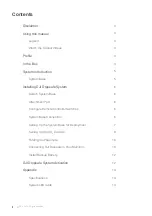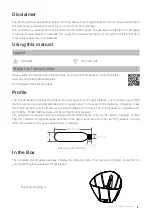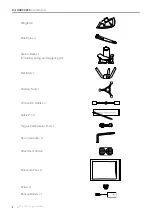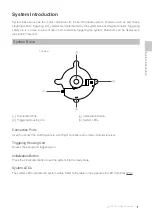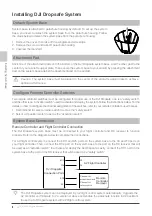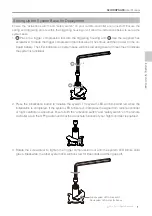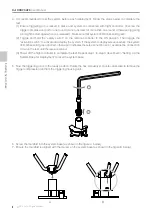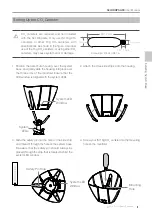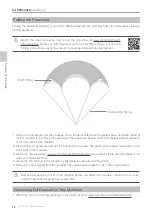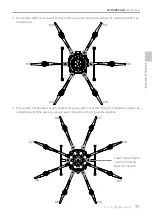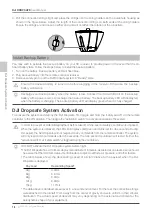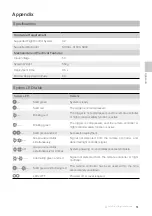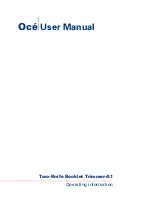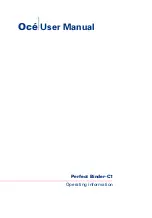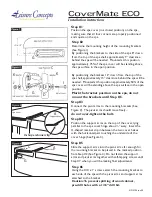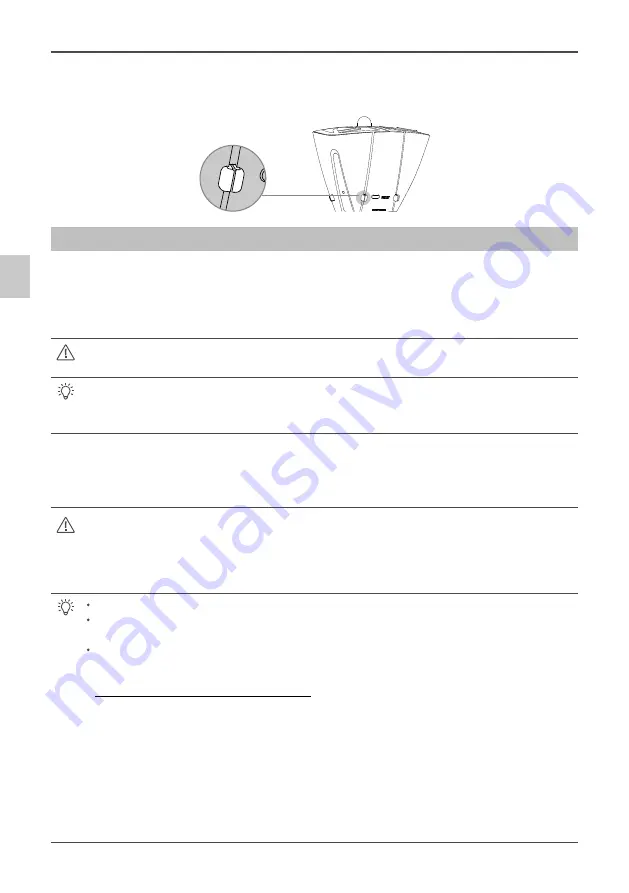
12
©
2014 DJI. All Rights Reserved.
DJI DROPSAFE
User Manual
DJI Dropsafe System Activation
Install Backup Battery
You may wish to activate the backup battery on your RC receiver to provide power in the event that the on-
board battery fails. Follow the steps below to install the backup battery:
1. Turn on the battery. Backup battery LED will flash blue.
2. Plug backup battery into the remote controller receiver.
3. Remove safety pin to put the DJI Dropsafe system in “Ready” state.
Ensure the backup battery is turned on before plugging in the receiver. Otherwise, the backup
battery won’t work.
Recharge your backup battery when the battery is low. Connect the micro-USB port on the backup
battery with a power source to recharge the backup battery. The backup battery LED will display red
when the battery is charging. The backup battery LED will display green when it is fully charged.
DJI Dropsafe System Activation
To activate the system and deploy the DJI Dropsafe, first toggle and hold the "safety switch" on the remote
controller to the ON position. Then toggle the "activation switch" to activate and deploy the system.
In order to prevent accidental deployment before takeoff, a nine second safety countdown is imposed.
When the system is initialized, the LEDs will display solid green and blink red for nine seconds. During
this period, the DJI Dropsafe will not respond to any commands from the remote controller. The system
will only respond to commands after nine seconds. The nine second countdown will restart if either the
"activation switch" or "safety switch" is toggled during the countdown.
DO NOT activate the DJI Dropsafe system before flight.
The DJI Dropsafe has a minimum deployment altitude of 6 meters, as tested at sea level. Users should
be aware that the minimum deployment altitude is subject to altitude, air pressure, and other factors.
The table below shows the descending speed of aircraft relative to the payload when the DJI
Dropsafe is deployed.
Pay Load
Descending Speed*
3kg
4.4m/s
6kg
5.6 m/s
9kg
6.8m/s
12kg
8.6m/s
15kg
11.7m/s
* The data above is obtained at sea level, in a no wind environment. For the test, the connection strings
were attached to the aircraft 17cm away from the center of gravity and were uniform in their circular
distribution. The actual speed of descent may vary depending on the external environment or the
aerodynamic shape of your equipment.
4. Pull the connection strings tight and place the strings into the string holders on the parachute housing as
shown in the figure below. Adjust the length of the connection strings on both ends of the string holders.
Ensure the strings are not loose on either end and will not affect the rotation of the propellers.


